Ettore Sottsass and the Social Factory
An exhibition focussing primarily on the designer's furniture, and its historical context.
ICA, Miami
18th April – 6th October 2019
IT’S HARD TO imagine that there could be a new way to look at architect and designer Ettore Sottsass (1917-2007), after a year filled with events celebrating his centenary, but Miami’s Institute of Contemporary Art has managed to do just that. ‘Ettore Sottsass and the Social Factory’ presents his work in the context of the social, political and economic circumstances of the years in which it was produced, between 1966 and 2005. “We wanted to treat him with the same rigour as we would an art history figure,” says Gean Moreno, Curator of Exhibitions, who co-curated the show with Artistic Director, Alex Gartenfeld. In order to more clearly reflect the changes and development of the designer’s vision, they focussed primarily on furniture, adding conceptual photography and drawing but omitting the decorative objects that populate most Sottsass surveys.
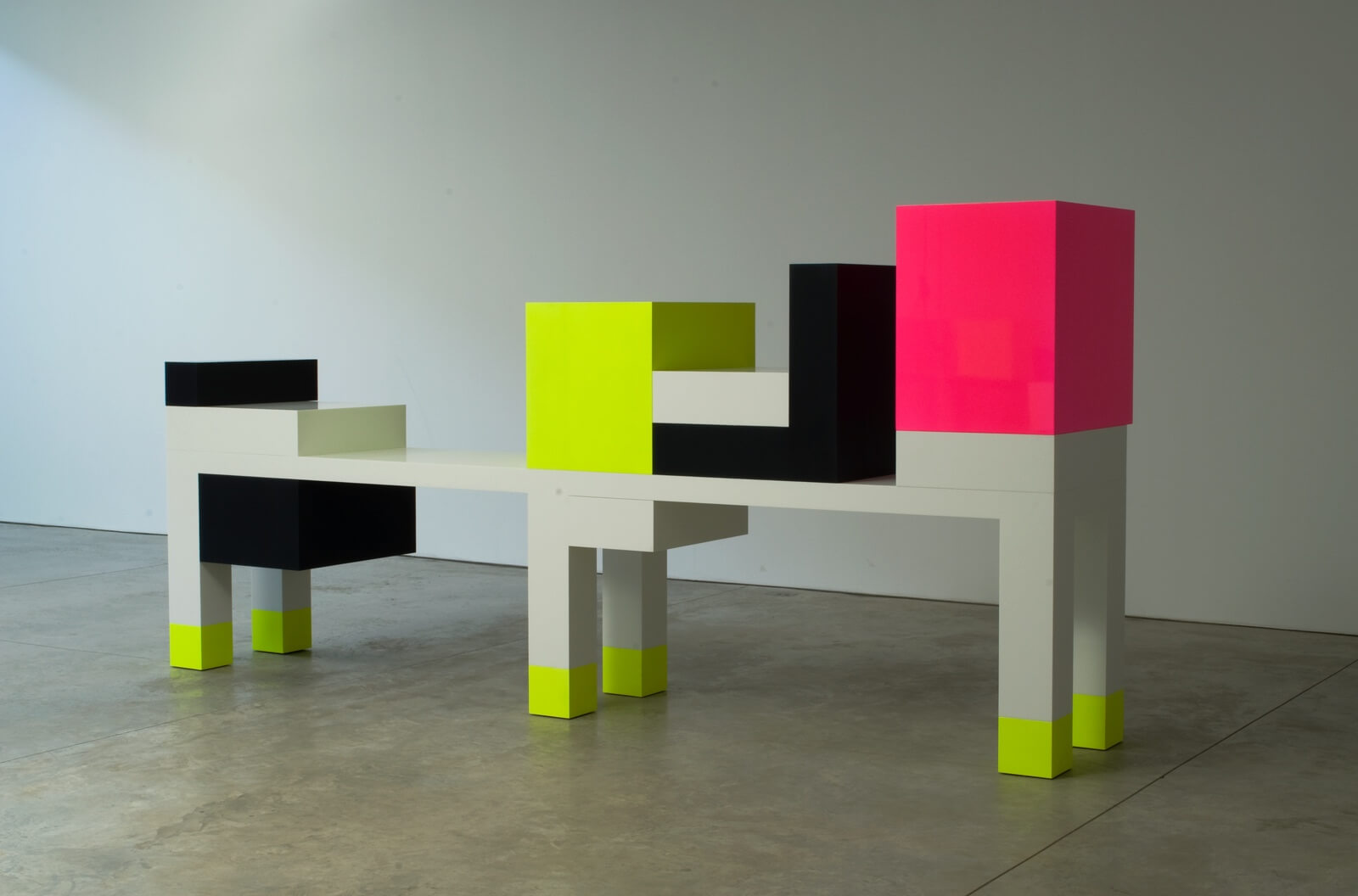
Ettore Sottsass, ‘Omaggio No. 5’, 2007
COURTESY: Friedman Benda / PHOTOGRAPH: Lucas Knipscher © 2019 Artists Rights Society (ARS), New York / ADAGP, Paris.
Mexican architect Frida Escobedo, designer of London’s Serpentine Pavilion in 2018, designed the exhibition as an airy, white-walled environment, using a series of scrims as partitions to define the decades while revealing the interior plan. The translucent dividers, recalling Sottsass’ own use of screens and partitions in his interiors, organise more than fifty works into four chronological sections.
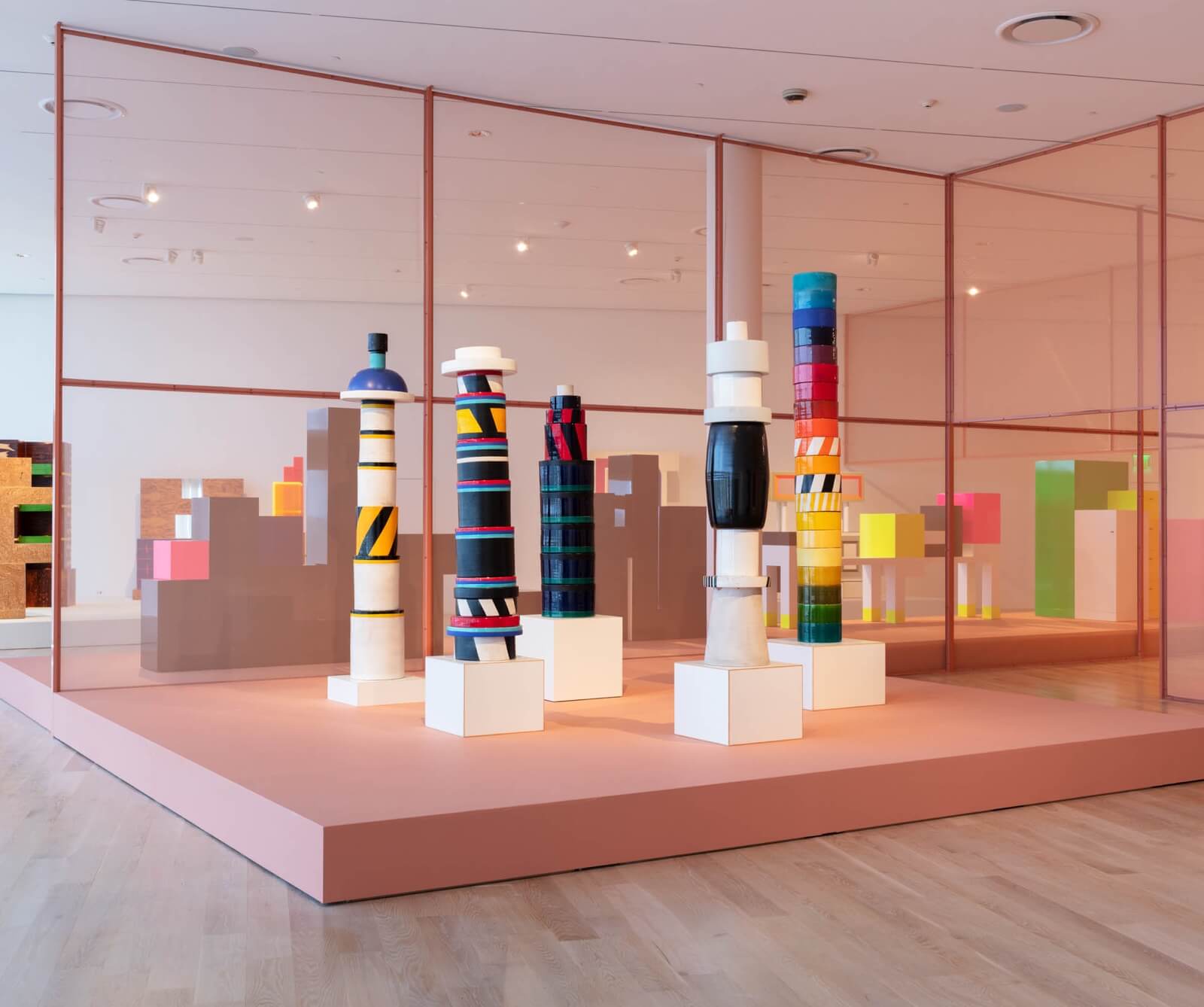
‘Ettore Sottsass and the Social Factory’, installation view
COURTESY: Fredrik Nilsen Studio © 2019 Artists Rights Society (ARS), New York / ADAGP, Paris
Sottsass’ ceramic totems are, appropriately, the opening salvo, evoking the pop-culture of the 1960s and making reference to tribal art, a particular interest of the designer. A handful of them stand like majestic, boldly striped artifacts on rectangular pedestals, enhanced by natural light filtered in through a wall of windows. Next, a bedroom suite in grey cast fibreglass reflects postwar Italy’s exploration of new materials and technology.
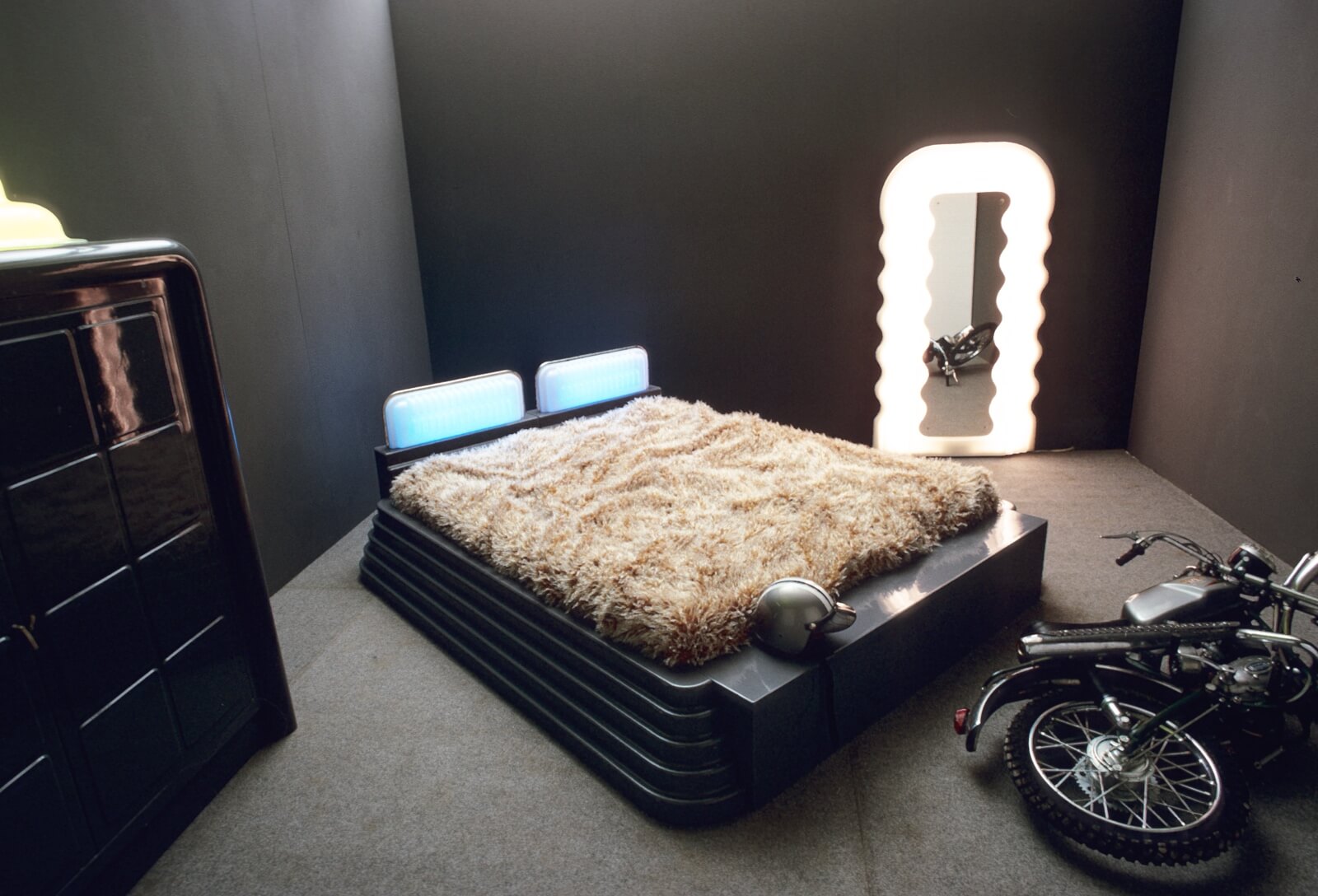
Ettore Sottsass, ‘Mobili grigi’, 1970
COURTESY: ICA Miami / PHOTOGRAPH: A. Fioravanti, E. Sottsass. © 2019 Artists Rights Society (ARS), New York / ADAGP, Paris.
In the area devoted to the 1970s, a suite of 63 metaphorical photographs, shown in the US for the first time in their entirety, were staged in stark landscapes he found in Spain, as he travelled there on romantic weekend rendezvous. Blowups of coloured drawings (too fragile to travel) of ‘The Planet as Festival’, from 1972, reflect the influence of that decade’s counterculture, depicting Sottsass’ fantasy of a utopian world free from the unpleasantness of urban life. More functional, though still not altogether realistic was Sottsass’ visionary project for the Museum of Modern Art’s ‘Italy: The New Domestic Landscape’ landmark exhibition of 1972, which helped to create an international image for postwar Italy as a centre of design innovation. His micro-environments on casters, shown in sketches and plans reproduced from MoMA archives, could be rearranged by occupants at will.
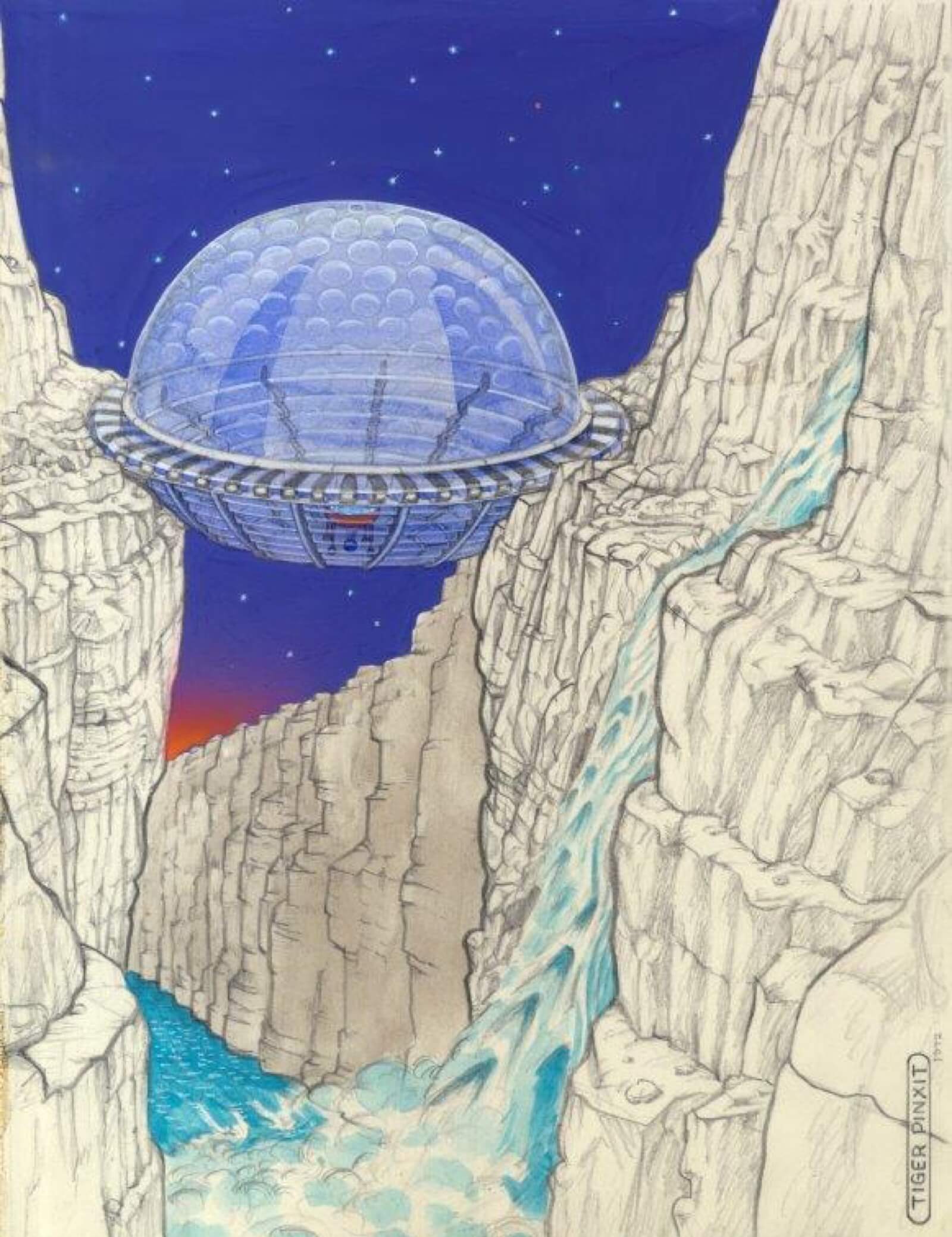
Ettore Sottsass, ‘The Planet as Festival. Study for Design of a Stadium for Rock Concerts, project (Aerial perspective)’, 1972-3
COURTESY: Barbara Radice
The rebellious design movements of the 1980s are represented by Sottsass’ unconventional, laminate-covered furniture, first for Studio Alchimia and then for the transgressive Memphis collaborative, including the now-iconic Carlton bookcase. The final, and most arresting, area of the exhibition showcases furniture produced between 1990 and 2002, including a series of vivid-coloured cabinets (designed as homage to Mondrian) and a series of monumental case pieces (some with painterly graphic motifs, and others in high-gloss finishes, or matte replicas of intricately-patterned exotic woods). The most recent is dated 2005, when Sottsass was 88. Surfaced in laminates, as were his earlier pieces, they are meticulously-detailed with chamfered corners and neat edge trim. In limited editions of six, these rarely seen designs are perhaps his most serious, and certainly his most seductive works.
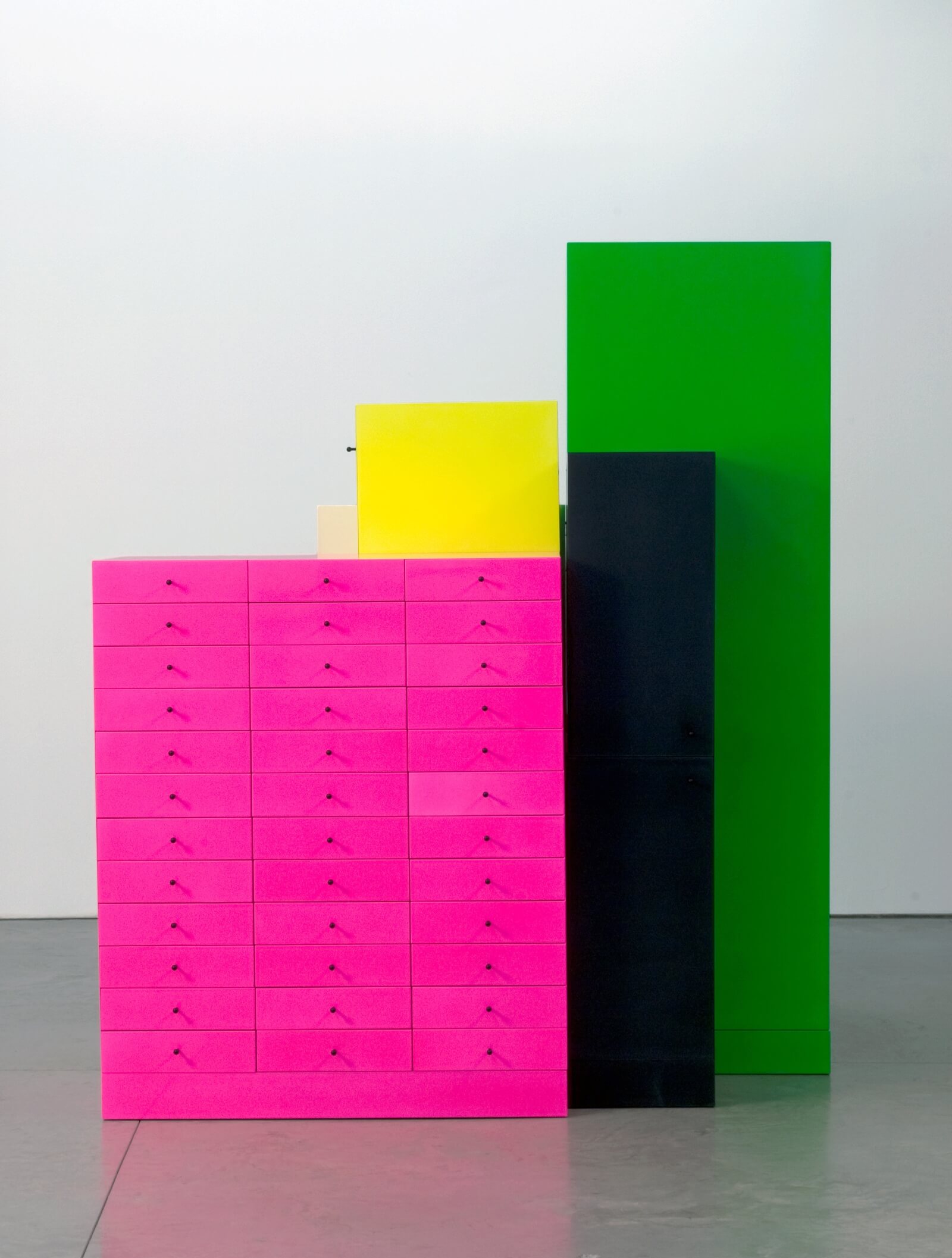
Ettore Sottsass, ‘Omaggio No. 3’, 2007
COURTESY: ICA Miami © 2019 Artists Rights Society (ARS), New York / ADAGP, Paris.
The Sottsass exhibition launches what the ICA planned as a series of biennial events dedicated to postwar and contemporary design, each focussing on a single designer. As a seminal figure in the period, Sottsass was, the curators felt, the obvious first choice. Acknowledging the symbiosis between all forms of visual culture, Gartenfeld explains that the intention is, “to view design through the critical lens of art.” Work on the current show drew on local collectors as well as international sources, and was completed in record time (around a year), though Moreno adds, “we started talking about it two and a half years ago,” well before the museum opened in December 2018.
Scheduling is still in catch-up mode, and the Sottsass catalogue will not be available for another two or three months. It will include twelve specially-commissioned essays by authorities and scholars including Jaleh Mansoor, Jacopo Galimberti, Evan Calder Williams, Francesca Balena Arista, and even a biographical sketch by science-fiction novelist Bruce Sterling. The catalogue will provide insight into the cultural context surrounding Sottsass, which is only briefly dealt with in the exhibition labels. Departing from the conventional design-exhibition content, it should be of particular interest to collectors of postwar and contemporary design, as most certainly is the exhibition it accompanies.
ICA Miami – offers year-round free and open access to the most innovative art of our time in the Miami Design District.



